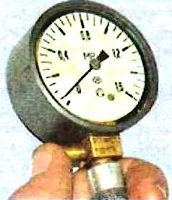The car engine won't start for the following reasons:
- - start system not working;
- - the automatic engine blocking system is faulty;
- - the ignition system does not work;
- - the power system is not working.
Also, the engine may not start if the canister purge valve is faulty
When air is sucked through the hoses of the fuel vapor recovery system, the engine may not start (leaky connections)
Faults in the launch system
If the starter does not turn on, the reason for this may be:
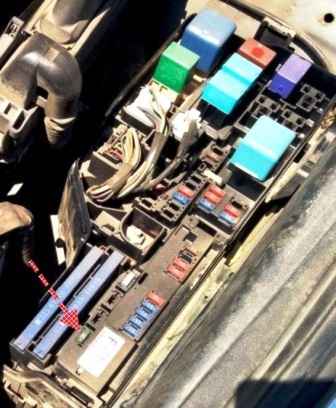
Fusible fuse ST / AM2 (30A) burnt out in the fuse box installed in the engine compartment

Or blown fuse AM1 (7.5A) installed in the fuse box in the passenger compartment
Also, the starter may not turn on due to a violation of the contact connections, in the event of an open or short circuit in the starter switching circuits, in the event of a malfunction of the traction relay
Multiple clicks when the starter is turned on:
A possible cause may be a malfunction of the holding winding of the traction relay;
The battery is very low;
Loose contact connections in the starter circuit
When the starter is turned on, its armature either does not rotate or rotates slowly:
Possible reasons - the battery is discharged, the connection contacts are broken, the contacts of the traction relay are burnt, the collector is dirty or the brushes are worn out, interturn or short circuit in the windings

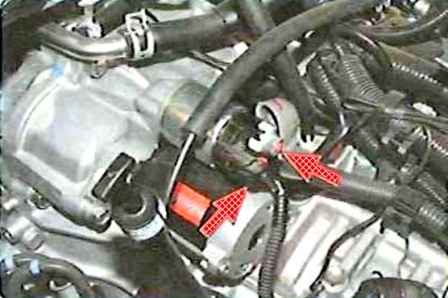
The starter turns on, its armature rotates, but the flywheel remains stationary:
- - loosening of the starter fastening to the clutch housing;
- - damage to the teeth of the flywheel or drive gear;
- - slipping of the freewheel of the drive, breakage of the lever, drive ring or buffer spring of the starter drive
The starter does not turn off after starting the engine:
The reasons are a malfunction of the starter freewheel, sintering of the contacts of the traction relay
If such a malfunction occurs, you must immediately stop the engine.
In this case, repair or replacement of the starter is required.
Checking the ignition system
Checking the ignition system comes down to checking the ignition wires, spark plugs, and connection contacts
Before checking, you need to set the selector lever to the "N" position, the parking brake must be applied
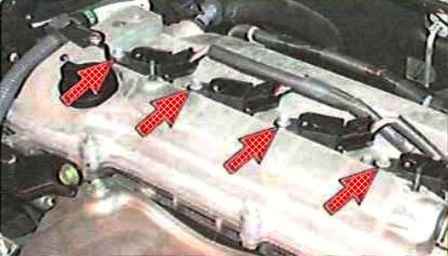
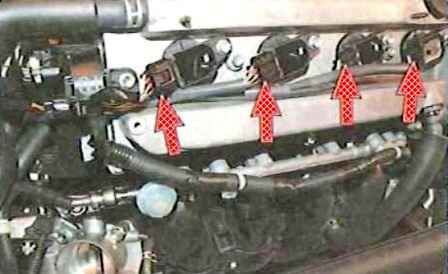
With the ignition off, we check the strength of the fastening of the ignition coils and the fastening of the wire blocks
Checking the condition of the ignition coil
If the low-voltage circuit of the ignition coil is working, check for a spark on the spark plugs
Remove the ignition coil

Insert the spark plug into the ignition coil
We connect the wiring block and press it with a metal part to the mass of the car (to the cylinder head cover)
(It is important that there is good contact between the body of the spark plug and the ground; if the contact is poor, the engine control unit may be damaged)
This test can only be performed for a maximum of five seconds to prevent Do not damage the exhaust gas converter if unburned gasoline in the engine cylinders gets into it
We ask the assistant to turn the engine crankshaft with the starter
If there is no spark, replace the ignition coil, spark plugs, high-voltage wires
If there is a spark, but the engine does not start, you need to check the engine control system
Checking the engine power system
An indicator of the health of the fuel system is the fuel pressure in the fuel rail
Checking the fuel pressure is described in the article - Checking and reducing the fuel pressure of the 2AZ-FE engine of a Toyota Camry car
With the engine idling, the pressure in the fuel line should be about 3 kgf / cm 2
The following reasons for pressure drop are possible:
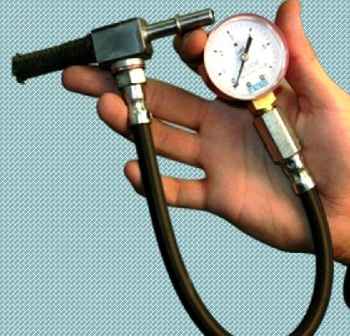
- - faulty fuel pressure regulator (built into the fuel pump module);
- - clogged fuel filter;
- - faulty fuel pump.










